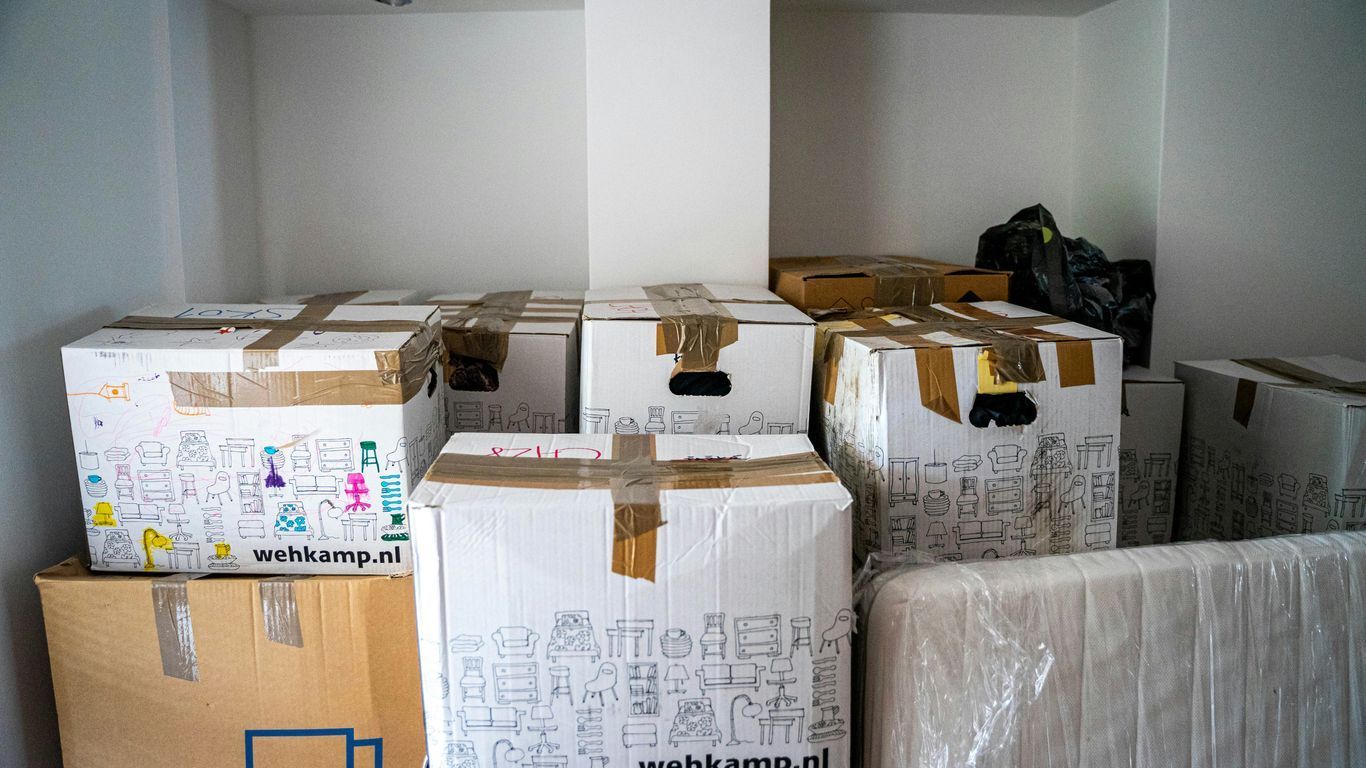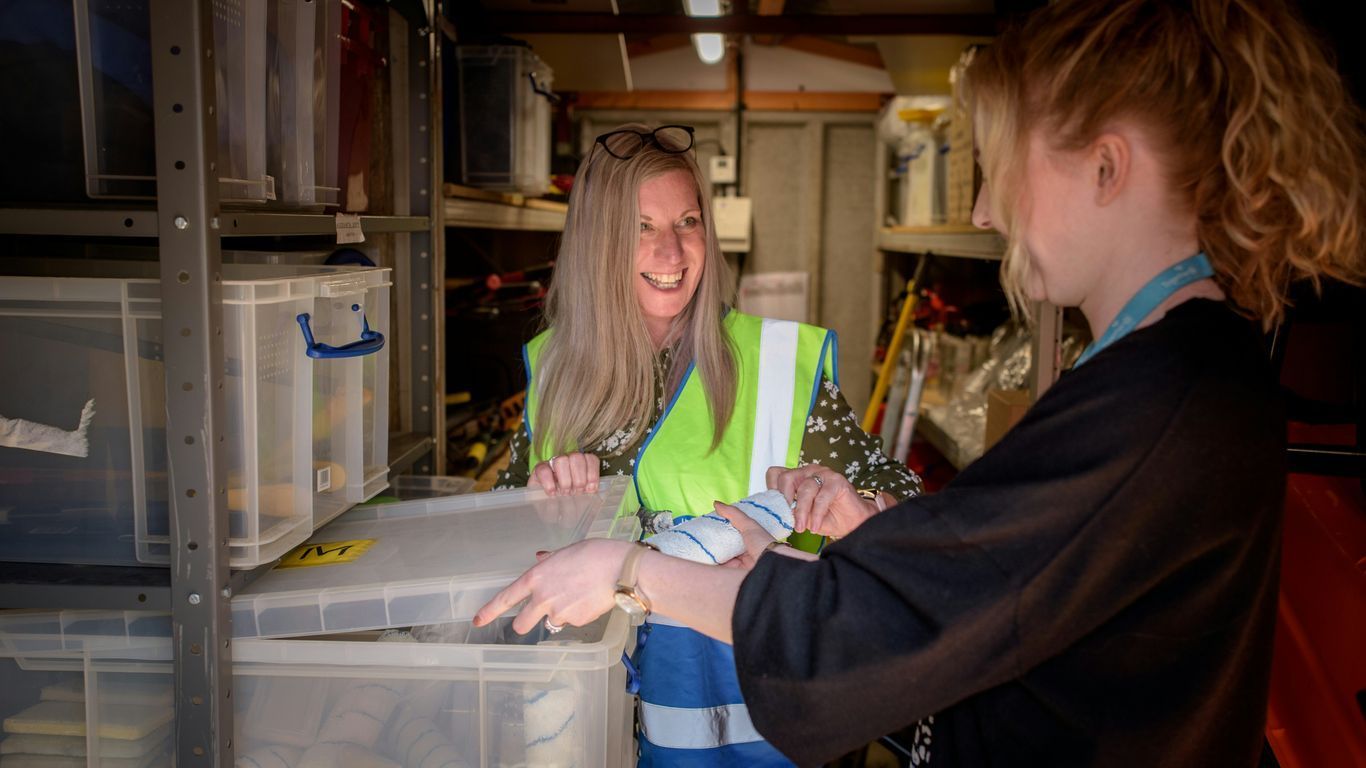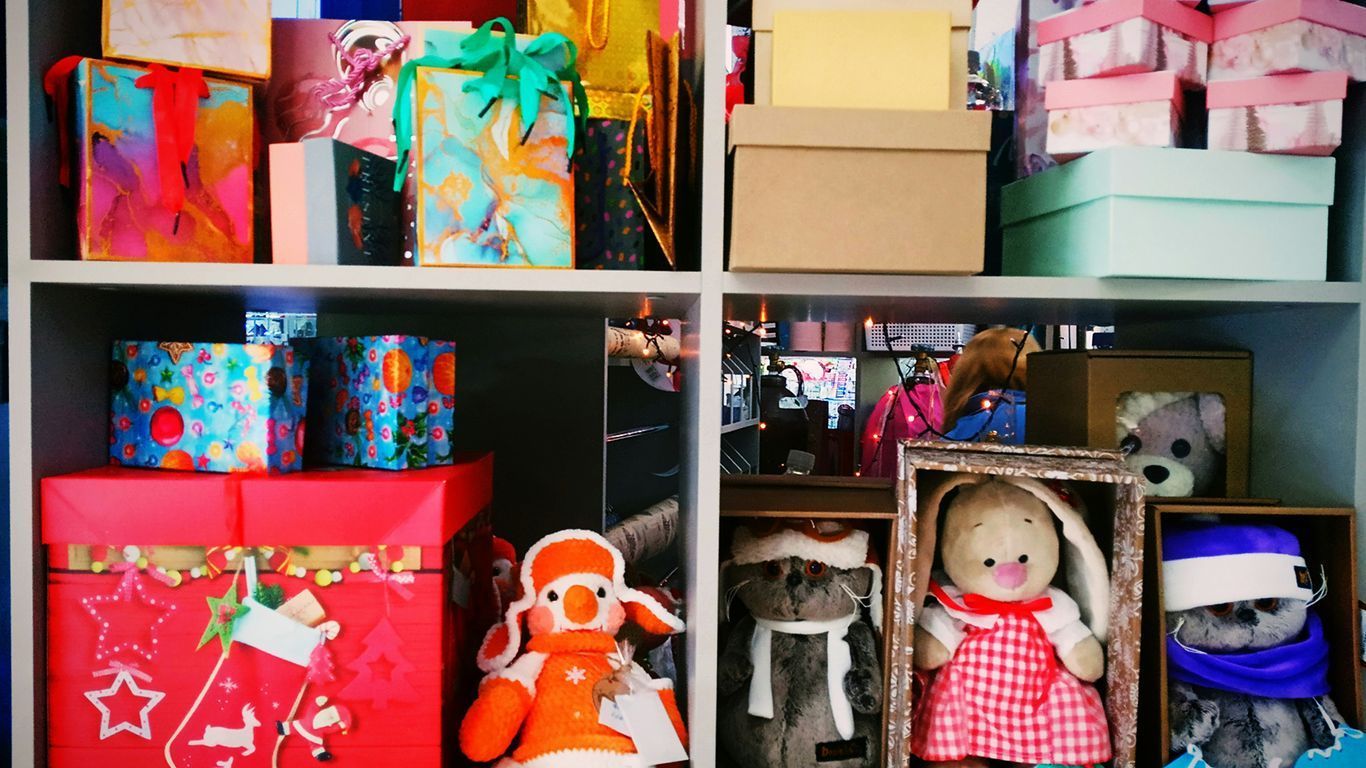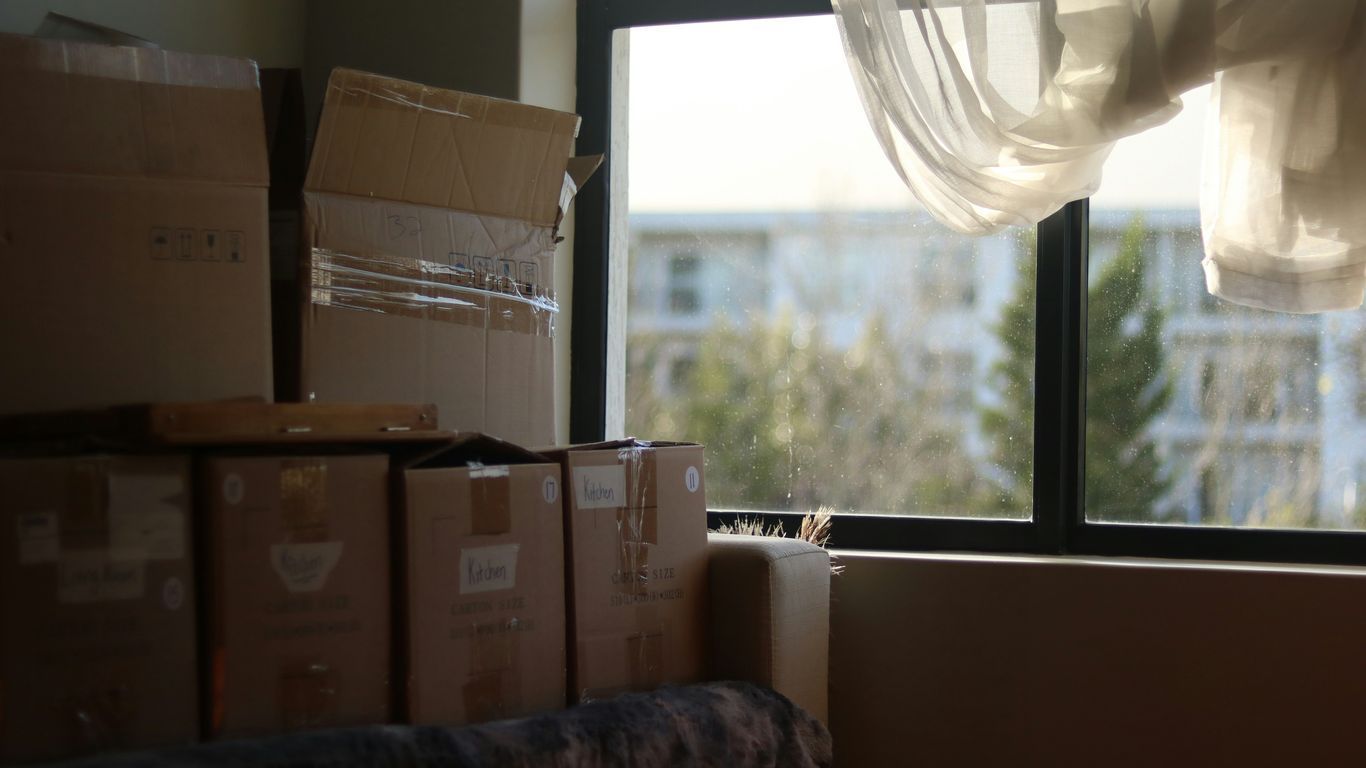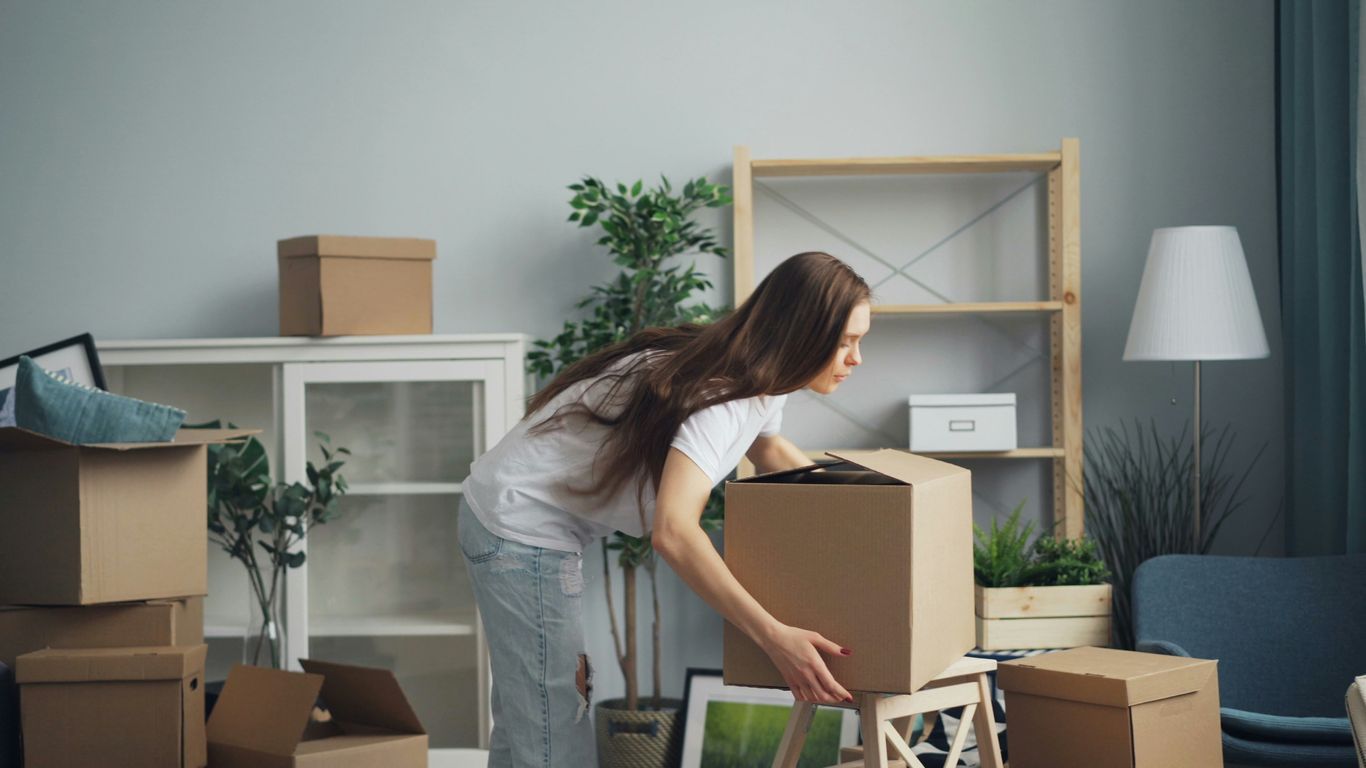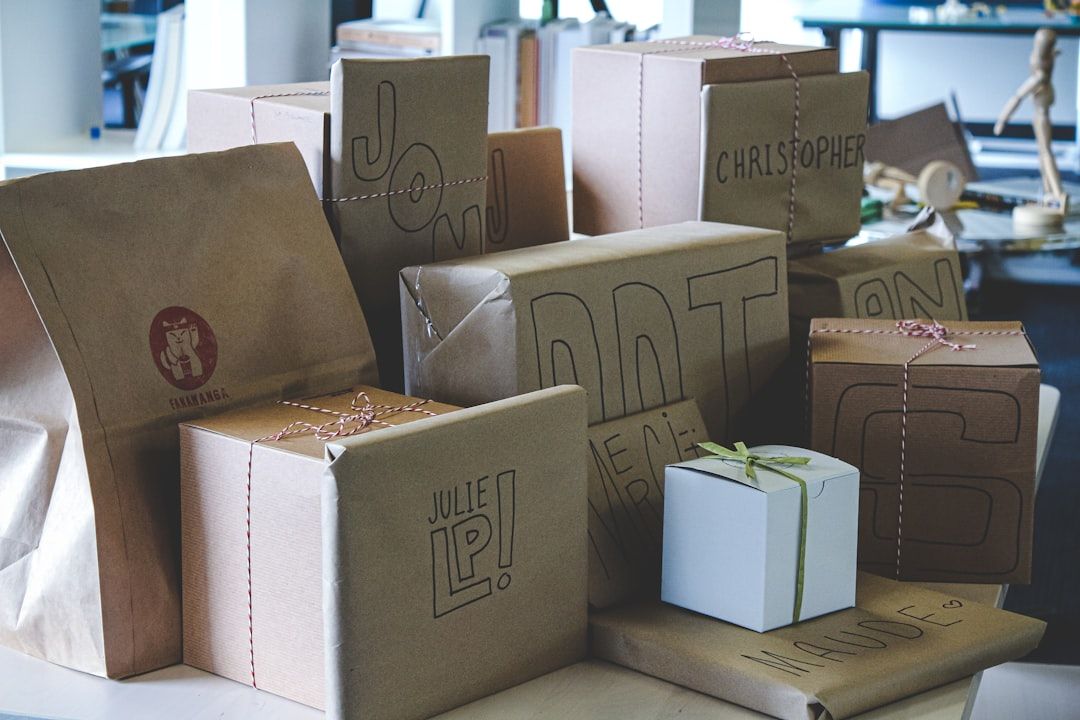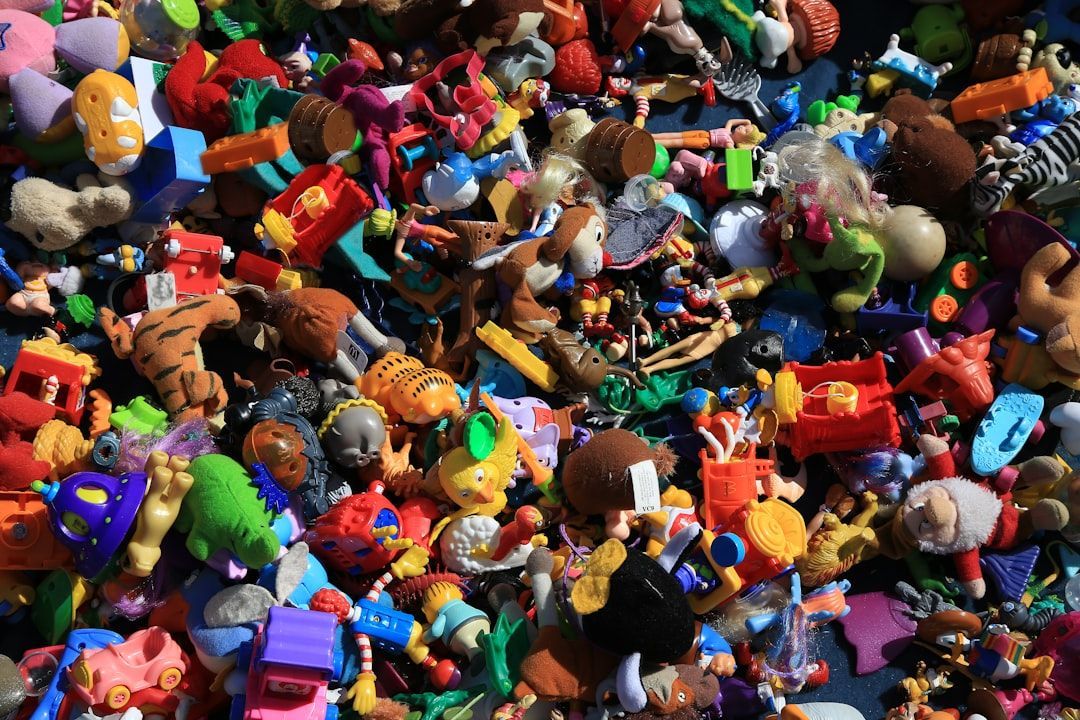What to Store and What to Keep: A Simple Decluttering Guide
Feeling like your home is overflowing with stuff? You're not alone. It's easy for things to pile up, making it hard to find what you need or just relax. This guide is here to help you sort through it all, offering practical decluttering storage tips for your Campbellsville home. We'll break it down room by room, and even touch on some simple rules to make the whole process less overwhelming. Let's get your space feeling more like you.
Key Takeaways
- Follow the 'One In, Two Out' rule: For every new item you bring home, get rid of two old ones. This helps keep clutter from building up.
- Designate a home for everything: When items have a specific spot, it's easier to put them away and keep surfaces clear.
- Use the 'Collect, Choose, Eliminate, Organize' method for drawers and small spaces to make the process simple.
- Don't be afraid to let go: If you haven't used something in a year or can replace it easily for under $20, it's likely time to part with it.
- Decluttering is ongoing: Schedule regular, short sessions to maintain a tidy home rather than waiting for it to become overwhelming.
Decluttering Your Living Spaces
Our living spaces are where we unwind, entertain, and just generally exist, but they can quickly become a magnet for stuff we don't really need. Keeping the living room tidy, for instance, really helps me relax after a long day. It doesn't take much for a small place to feel completely overwhelmed with clutter.
Reducing Decorative Clutter
Over time, our tastes change, and that’s perfectly normal! Take a good look around your living room, your shelves, and even your walls. Are there decorative items that just don't fit your style anymore, or maybe don't bring you any joy? Perhaps it's a vase you never use, a knick-knack that feels dated, or a picture that doesn't speak to you. Letting these things go doesn't mean they weren't important once; it just means they've done their job. Donate or sell decor that no longer matches your vibe, and make space for things that actually reflect who you are now. You might be surprised how much better the room feels.
Organizing Small Items
Little things have a way of multiplying and spreading everywhere, don't they? Remote controls, charging cords, stray pens – they can make surfaces look messy in no time. A simple solution is to use baskets or small containers to corral these items. It keeps them contained and makes it easy to find what you need without digging through a pile. Designated spots for these bits and bobs make a huge difference.
Decluttering Shelves and Surfaces
Surfaces are notorious clutter magnets. As a general rule, try to keep them as clear as possible. A quick five or ten-minute sweep through your house each day to put things back where they belong can really help maintain this. After you do an initial declutter of a shelf or table, make a habit of tidying up daily. For books, consider if you'll really read them again or if they're just there for looks. If neither is true, it might be time to pass them on. You can find some great ideas for maximizing your living space by storing large items in deep cupboards, which is tidier than storing many small items to maximize your living space.
When it comes to old magazines and newspapers, they can really eat up space and gather dust. If you've been saving them for
Wardrobe and Clothing Decluttering
Let's talk about your closet. It's easy for clothes to pile up, and before you know it, you're staring at a mountain of fabric that you don't even wear. Tackling your wardrobe can feel like a big job, but breaking it down makes it way more manageable. The goal here is to have a closet filled with things you actually like and use, not just stuff that takes up space.
The One-Year Rule for Clothes
This is a pretty straightforward concept. Go through your clothes and pull out anything you haven't worn in the last year. Seriously, if it's been hanging there, unworn, for 365 days (give or take), it's probably time to let it go. Think about it: if you haven't needed it or wanted to wear it for that long, the chances of it suddenly becoming a favorite are pretty slim. This is a great way to start, and you can donate or sell these items to someone who will get more use out of them. It's a win-win, really. You clear out your closet, and someone else gets some great clothes.
Organizing Your Wardrobe
Once you've pared down your collection, it's time to organize what's left. Try to group similar items together. Hang all your shirts together, then your pants, then your dresses, and so on. This makes it so much easier to find what you're looking for. You can also try using matching hangers; it sounds minor, but it really does make a closet look tidier and can even save a bit of space. Consider using shelf dividers or small bins for accessories like scarves or belts. A well-organized closet means less time searching for outfits and more time enjoying them.
Keeping your wardrobe functional and enjoyable is key. It's not about having the most clothes, but about having the right clothes that make you feel good and fit your life. Don't be afraid to let go of items that no longer serve you.
Letting Go of Unworn Shoes
Shoes are another big one. Just like clothes, if you haven't worn a pair of shoes in a year, it's time to reconsider. Are they comfortable? Do they actually go with anything you own? Are they still in decent condition? If the answer to any of these is a firm 'no,' then it's time for them to find a new home. Keep the pairs that are comfortable, versatile, and that you genuinely love wearing. You don't need a closet overflowing with shoes you never put on. Focus on quality over quantity, and you'll find getting dressed in the morning becomes a lot simpler. For more tips on a successful closet cleanout, check out this closet clean out guide.
Kitchen and Dining Area Organization
Let's talk about the kitchen and dining area. This is often the heart of the home, so getting it organized can make a big difference. It's easy for things to pile up here, from expired food to gadgets we never use.
Clearing Expired Food and Duplicates
First things first, let's tackle the pantry and fridge. Go through everything, checking expiration dates. You'd be surprised how much stuff is lurking in there that's past its prime. Don't just toss it; make a note of what you're throwing out so you can be more mindful when shopping. Also, look for duplicates. Do you really need three can openers? Probably not. Keep the best one and let the others go. This is a good time to sort through those random spices too – if you haven't used it in a year, it's likely stale anyway.
Managing Kitchen Appliances
Appliances can take up a lot of space. Think about what you actually use on a regular basis. Those single-use gadgets, like a banana slicer or a specific sandwich maker, might be taking up valuable real estate. If you haven't used an appliance in the last six months to a year, seriously consider donating it. Keep only the appliances that genuinely make your life easier. If you have a lot of small appliances, look into organizing options like drawer dividers or bins to keep them tidy and accessible. You can explore new organization options for your kitchen here.
Organizing Cupboards and Drawers
Now for the cabinets and drawers. Empty them out completely. Wipe down the shelves and drawers before putting things back. Group similar items together – all your baking supplies in one area, all your plates and bowls in another. Use drawer dividers for utensils and cutlery to keep them from becoming a jumbled mess. For pots and pans, keep the ones you use most often. If you have serving dishes you haven't used in ages, it might be time to let them go.
It's easy to feel overwhelmed, but taking it one drawer or shelf at a time makes it manageable. Focus on what you use and what brings you joy in the kitchen.
Bathroom and Personal Care Decluttering
Let's talk about the bathroom. It's a space that can easily become a dumping ground for half-used products and things we might need someday. The goal here is to create a calm, functional space.
Discarding Expired Products
First things first, let's tackle that medicine cabinet and any other spot where you keep medications or personal care items. Go through everything and toss out anything that's past its expiration date. Seriously, expired meds aren't good for anyone. Also, if you have duplicates of things like toothpaste or shampoo, check the dates on those too. If they're old, it's time to let them go. Combine any open products if they're still good and you use them regularly. It's about making sure what you have is safe and effective.
Managing Toiletries and Makeup
This is where things can get a bit wild. Pull out all your toiletries and makeup. Yes, all of it. Look at what you have. Are there lotions you got as gifts and never used? Makeup samples that have been sitting around forever? Be honest with yourself about what you actually use on a regular basis. If you have a ton of backups for a product you use daily, maybe keep one extra, but anything beyond that can probably go. Consider donating unopened, unexpired items to a local shelter. For makeup, if you haven't touched a product in six months, it's probably time to say goodbye. You might find you only really use a handful of items regularly, and that's perfectly okay. Decluttering your bathroom can feel really good.
Folding and Rolling Towels
Towels are another area where clutter can creep in. How many bath towels do you really need? A good rule of thumb is one or two per person in the household, plus maybe one extra for guests. If you have a collection of old, threadbare towels that you only use for cleaning, consider designating them as such or getting rid of them altogether. For the towels you're keeping, folding them neatly or rolling them can save a surprising amount of space in your linen closet or on shelves. It also just makes the whole space look tidier. Think about having enough washcloths and hand towels so you always have a clean one ready, even if one is in the wash.
Entryway and Hallway Tidiness
The entryway and hallway are the first and last impressions of your home. Keeping them tidy makes a big difference. It’s easy for this space to become a dumping ground for mail, keys, shoes, and coats, but with a few simple strategies, you can bring order to the chaos.
Designated Spots for Keys and Mail
One of the biggest entryway culprits is scattered mail and misplaced keys. Set up a simple system right away. A small tray or a wall-mounted organizer near the door can be a lifesaver. This way, incoming mail has a clear place to land, and your keys are always where you can find them. It prevents that frantic morning search.
Storing Shoes and Coats
Shoes and coats can quickly pile up. Consider a shoe rack or a bench with built-in storage for footwear. For coats, install hooks or a small coat rack. It’s helpful to only keep the coats and shoes currently in season by the door; store the rest elsewhere. This keeps the immediate area clear and manageable. You can find some great ideas for entryway organization here.
Seasonal Item Management
Think about what you actually need access to daily. Items like umbrellas, seasonal hats, or extra bags can often be stored away until needed. A basket or a bin can hold these items neatly, keeping the main walkway clear. This approach helps maintain a clean look and makes it easier to find what you need when the weather changes.
Attic and Storage Space Management
Attics and storage spaces often become the final resting place for items we don't know what to do with, but they don't have to be a black hole of forgotten belongings. Tackling these areas can feel overwhelming, but breaking it down makes it manageable. The goal is to create functional storage, not just a place to shove things.
Sorting Items for Disposal
Start by pulling everything out, or at least working in sections. Grab some boxes or bags and label them clearly: 'Keep,' 'Donate,' 'Recycle,' and 'Trash.' Be honest with yourself about what you truly need or love. If you haven't seen it in years and have no immediate plans for it, it's probably time to let it go. Consider taking photos of sentimental items before donating them if the memory is what you want to preserve. This process helps you see exactly what you have and make informed decisions about each item.
Labeling and Storing Sentimental Items
Sentimental items deserve a special place, but they shouldn't be mixed in with everyday storage. Use sturdy, clear bins for these treasures. Label each bin with a general description of its contents (e.g., 'Childhood Memories,' 'Holiday Decorations'). This makes it easier to find specific items later without having to rummage through everything. It’s also a good idea to revisit these bins every few years to ensure you still want to keep everything inside. You might find that some memories are best kept in a photo album or a digital format now.
Reviewing Long-Term Storage
Think of your attic or storage space as a library for things you use infrequently. Items like seasonal decorations, old photo albums, or perhaps camping gear fit well here. The key is to make sure these items are stored properly to prevent damage. Use airtight containers to protect against dust and moisture. Avoid storing anything that could degrade in temperature fluctuations, like electronics or certain fabrics, unless they are specifically designed for such conditions. For larger storage needs, explore options like attic lifts to make accessing your stored items easier and safer.
Fundamental Decluttering Principles
Getting a handle on clutter isn't just about making your home look nice, though that's a big perk. It's really about making your life simpler and less stressful. When you're surrounded by stuff you don't need or use, it can feel like a constant weight. Think about it – every item you own requires some sort of attention, whether it's dusting, organizing, or just moving it out of the way. Reducing that mental and physical load can be incredibly freeing.
The Collect, Choose, Eliminate, Organize Method
This is a straightforward approach that works for pretty much any space, from a single drawer to an entire room. It breaks down the process into manageable steps:
- Collect: Take absolutely everything out of the space you're working on. Pile it all up somewhere visible, like a table or the floor. Seeing it all at once can be a bit shocking, but it's necessary.
- Choose: Go through the pile and pick out only the items you truly love, use regularly, or that hold significant importance. Be really selective here. Put these chosen items into a separate, smaller pile.
- Eliminate: Everything that's left in the original pile needs to go. This is where you toss, donate, or sell. Don't get too sentimental; if you haven't used it or loved it, it's probably time to let it go. You can find a good home for many things through local charities.
- Organize: Before putting anything back, clean the now-empty space. Then, neatly arrange the items you chose to keep. Group similar items together and leave a little breathing room between them. This makes everything easier to find and maintain.
The goal isn't just to get rid of stuff, but to create a system where things have a purpose and a place. This makes future tidying much easier.
Applying the 90/90 and 20/20 Rules
These are simple, effective guidelines to help you decide what to keep and what to let go:
- The 90/90 Rule: Ask yourself if you've used an item in the last 90 days. If the answer is no, ask yourself if you'll use it in the next 90 days. If the answer to both is still no, it's likely time to let it go.
- The 20/20 Rule: If you can replace an item for less than $20 and in less than 20 minutes, you probably don't need to keep it. This is especially useful for things like basic tools or common household items that are easily replaceable.
The One In, One Out Strategy
This is a fantastic way to prevent clutter from building up again after you've done your initial decluttering. For every new item that comes into your home, commit to removing one similar item. If you buy a new shirt, donate an old one. If you get a new book, pass on one you've already read. It's a simple habit that keeps your belongings in check and encourages mindful consumption.
Maintaining a Clutter-Free Home
Keeping your home tidy after a big decluttering effort is all about building good habits. It’s not a one-time thing, you know? Clutter has a way of sneaking back in if you’re not careful. Think of it like tending a garden; you have to keep at it.
Creating Designated Spaces
One of the easiest ways to stop clutter before it starts is to give everything a home. When you’re done with something, put it back where it belongs. This sounds super simple, but it makes a huge difference. If you don’t have a spot for something, maybe you don’t really need it, or you need to find a better place for it. Think about things you use a lot, like your keys, wallet, or the mail. Having a specific tray or hook for these items means they won’t end up scattered all over the place. It’s about making it easy to put things away.
Scheduling Regular Decluttering Sessions
Even with good habits, some clutter is bound to accumulate. That’s why it’s smart to schedule regular check-ins. You don’t need to do a massive purge every week, but maybe set aside 15-30 minutes each weekend to do a quick sweep. Go through mail, put away stray items, and clear off surfaces. You could also do a bigger decluttering session seasonally, like when you switch out your wardrobe. This keeps things from getting out of hand and makes the process less daunting.
Being Intentional About New Purchases
This is a big one. Before you buy something new, stop and think. Do you really need it? Where will it live in your home? Will it add value to your life, or just take up space? Try adopting a 'one in, one out' rule. For every new item that comes into your house, commit to getting rid of a similar item. Bought a new shirt? Donate an old one. Got a new book? Pass on one you’ve already read. This simple practice helps keep the number of things you own in check and makes you think twice before bringing more stuff home.
Keeping your home clutter-free isn't about perfection; it's about creating a peaceful environment that supports how you want to live. Small, consistent actions are the key to long-term success.
Keeping your home tidy doesn't have to be a chore. Simple steps can make a big difference in reducing mess. Try putting things away right after you use them, and set aside a few minutes each day for a quick tidy-up. You'll be amazed at how much calmer your space feels. For extra help with storage solutions, check out our website!
Keeping the Clutter at Bay
So, you’ve gone through your stuff, made some tough calls, and hopefully ended up with a space that feels a lot lighter. That’s awesome! Remember, decluttering isn't a one-time thing; it’s more like a habit you build. Try to stick with that 'one in, one out' idea, or maybe even 'one in, two out' if you’re feeling ambitious. Just being a little more mindful about what comes into your home can make a huge difference. And don't forget to give yourself a pat on the back for the progress you've made. Your home should feel like a place you enjoy being in, not a storage unit. Keep up the good work!
Frequently Asked Questions
How do I know what things to get rid of?
Think about the "one-year rule." If you haven't used or worn something in the past year, it's probably time to let it go. Also, try to get rid of things that are broken, don't fit anymore, or you just don't like. Sorting items into piles like "Keep," "Donate," "Recycle," and "Trash" can make deciding easier.
Where should I start, and how do I avoid feeling overwhelmed?
It's best to tackle one room or even just one small area, like a drawer, at a time. Don't try to do everything at once! Set a timer for a short period, like 30 minutes, and focus on that one spot. This makes the job feel less overwhelming.
How can I stop clutter from coming back after I clean?
The "One In, One Out" rule is a great way to keep clutter from piling up again. For every new item you bring into your home, try to get rid of one similar item you already own. For example, if you buy a new shirt, donate an old one.
Is decluttering just about getting rid of junk?
Yes, absolutely! Decluttering isn't just about getting rid of stuff. It's about making space for things you truly need and love, and creating a calmer, more organized home that makes you feel good.
What if I'm not sure if I should keep something?
When you're unsure about an item, ask yourself if you've used it in the last 90 days and if you really think you'll use it in the next 90. Another good question is: could I replace this easily and cheaply if I really needed it later? If the answer is yes to both, it might be okay to let it go.
How often should I declutter?
Making decluttering a habit is key. Try to spend a few minutes each day putting things back in their place or tidying up a small area. Scheduling a slightly longer session once a week or once a month can also help keep things under control.

